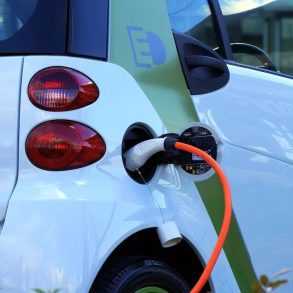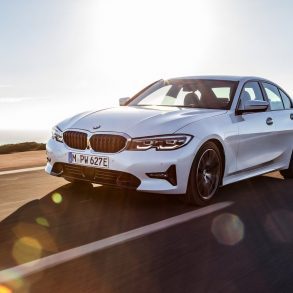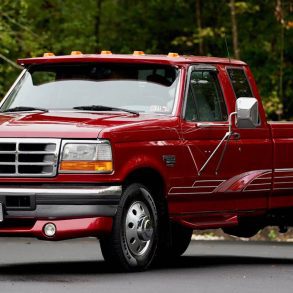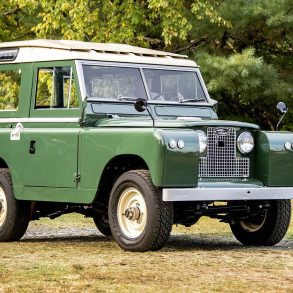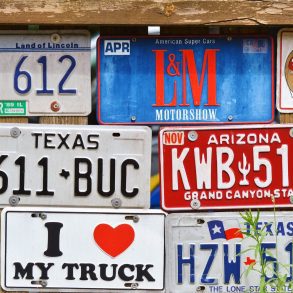We’ve discussed the 2016 success stories and disappointments of the Chinese car market, now we’ll focus on our expectations for 2017, like we’ve done for Europe. Looking ahead, even one year, can be very tricky. Last year we predicted EVs and PHEVs in China to continue their boom. From January to November 2016 sales of New Energy vehicles increased 102% in a market up 18%, to 282.292 units, including 41.796 in November alone. Pure electric car sales were the bulk of that volume with 208.839 units, an increase of 145%, while plug-in hybrid sales increased 35% to 73.453 units. And the good news is that although electric minicars/citycars still make up the bulk of China’s pure EV sales (62,2%), the real growth comes from the compact EV segment with sales up almost 9-fold. We also predicted two disappointments for 2016: DS and Volkswagen. DS was a no-brainer and you can read in our disappointments article, and for Volkswagen we said it would have to get used to single digit growth but the brand has shown remarkable resilience and has managed to grow 12,7% through November. While that’s still slower than the overall market, keep in mind the brand has completely missed the crossover hype in the same way PSA has, but it sedan-heavy line-up has continued to sell well. VW has launched 3 new nameplates in 2016: the Sportsvan has outsold its rival BMW 2-Series by almost 3-to-1, the Phideon is more of an image booster than a volume model at 800 monthly sales, but the C-Trek is the most promising with 5.600 sales in its first month.
1. Jeep: success
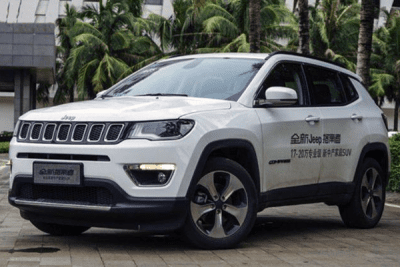 Like DS was last year, Jeep is a no-brainer here. The American SUV brand could easily have been mentioned among our success stories of 2016, as it has sold well over 100.000 units in its first year of local production in China, peaking at over 16.000 sales in November with its two models: Cherokee and Renegade. That puts the brand ahead of Cadillac, which did get a mention as one of the most successful brands in China last year. But the reason for holding off and predicting even more success for Jeep in 2017 is the launch of the new generation Compass early this year. The previous generation Compass (and Patriot) have been the best selling import models in China, and starting local production will only add to that success. The new Compass should easily become the brand’s best selling local nameplate too, which would mean we expect Jeep sales to more than double in 2017, to over a quarter million units. Ambitious? Absolutely, but not irrealistic. The brand has enormous brand equity and recognition in China, the Compass falls right in between the Cherokee and Renegade in size and price, and there are plenty of import brand crossovers selling well over 100k a year: Buick Envision >250k, Volkswagen Tiguan >240k, Honda CR-V >180k, Hyundai Tucson >175k, Nissan Qashqai >135k, Ford Kuga (Escape) >120k, so I’d be disappointed if Jeep didn’t hit 250k in 2017 with its three models.
Like DS was last year, Jeep is a no-brainer here. The American SUV brand could easily have been mentioned among our success stories of 2016, as it has sold well over 100.000 units in its first year of local production in China, peaking at over 16.000 sales in November with its two models: Cherokee and Renegade. That puts the brand ahead of Cadillac, which did get a mention as one of the most successful brands in China last year. But the reason for holding off and predicting even more success for Jeep in 2017 is the launch of the new generation Compass early this year. The previous generation Compass (and Patriot) have been the best selling import models in China, and starting local production will only add to that success. The new Compass should easily become the brand’s best selling local nameplate too, which would mean we expect Jeep sales to more than double in 2017, to over a quarter million units. Ambitious? Absolutely, but not irrealistic. The brand has enormous brand equity and recognition in China, the Compass falls right in between the Cherokee and Renegade in size and price, and there are plenty of import brand crossovers selling well over 100k a year: Buick Envision >250k, Volkswagen Tiguan >240k, Honda CR-V >180k, Hyundai Tucson >175k, Nissan Qashqai >135k, Ford Kuga (Escape) >120k, so I’d be disappointed if Jeep didn’t hit 250k in 2017 with its three models.
2. Volvo: success
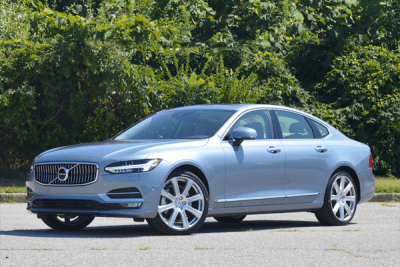 The Chinese-owned Swedish brand has had a transition year in 2016, with no new products, but also without its flagship sedan S80L, which means sales were stable (up 5,8% through November). In 2017 Volvo will launch its all-new S90L sedan and the S90L Excellence top-of-the-line version, which should give its Chinese sales a nice boost of 50% to reach close to 100.000 annual sales for the first time ever, up from its current 66.000 sales. Volvo’s parent company Geely is serious about its ambitions, as the S90L will be exported to Europe and the US, just like the current S60L is already exported to the US in small numbers. It has also revealed plans to launch a new brand, Lynk & Co based on Volvo’s small car platform, and is still contemplating a Mercedes-Benz S-Class rival for Volvo (S100?). In its home market, Geely wants Volvo to become a full-blown rival to the German luxury brands Audi, BMW and Mercedes-Benz, but it has a long way to go in terms of volume. 2017 could be a great start for the brand to catch up in the large sedan segment.
The Chinese-owned Swedish brand has had a transition year in 2016, with no new products, but also without its flagship sedan S80L, which means sales were stable (up 5,8% through November). In 2017 Volvo will launch its all-new S90L sedan and the S90L Excellence top-of-the-line version, which should give its Chinese sales a nice boost of 50% to reach close to 100.000 annual sales for the first time ever, up from its current 66.000 sales. Volvo’s parent company Geely is serious about its ambitions, as the S90L will be exported to Europe and the US, just like the current S60L is already exported to the US in small numbers. It has also revealed plans to launch a new brand, Lynk & Co based on Volvo’s small car platform, and is still contemplating a Mercedes-Benz S-Class rival for Volvo (S100?). In its home market, Geely wants Volvo to become a full-blown rival to the German luxury brands Audi, BMW and Mercedes-Benz, but it has a long way to go in terms of volume. 2017 could be a great start for the brand to catch up in the large sedan segment.
3. State-owned automakers: disappointment
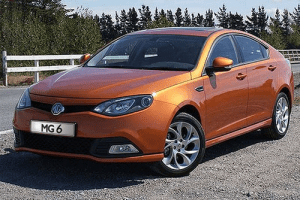
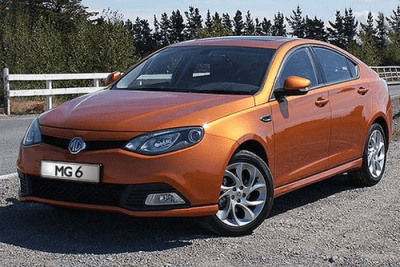 I’ve been contemplating on a separate article on this phenomenon for a while, but I’ll make a short introduction to it right here: China’s government has mandated foreign automakers to form Joint Ventures with local manufacturers if they want to produce cars in China and avoid the high import duties. This strategy intended to give those local companies the opportunity to learn from their foreign partners and help to the technology to develop their own brands and models. However, for some Chinese carmakers, this has turned out badly: they’ve been unable to successfully build their own brands in China and therefore are unhealthily dependend on their overseas rivals for their profit, even using that profit to support their failing domestic brands, while their privately owned rivals have had the incentive to build their own brands and even start thinking of exports to mature markets like the US and Europe. The best examples of such troubled state-owned automakers are FAW, Chery and SAIC with its Maxus, MG and Roewe brands. The former has seen stagnating sales of its own brands and relies on profits from its Joint Ventures with Volkswagen, Audi and Toyota for over 90% of its profits. Only 7% of its production in 2016 were badged as one of its domestic (sub)brands FAW, Besturn or Hongqi. Chery has a Joint Venture with Jaguar–Land Rover for local production of the XFL, Discovery Sport and Range Rover Evoque, but 2016 is the first year in almost a decade that its own brand has managed to grow its market share, which has dropped from over 7% in 2007 to just over 2% last year. Lastly, Shanghai Automotive Industry Corporation has got Joint Ventures with the two largest manufacturers in China: Volkswagen and General Motors, but sales of its own brands Roewe, MG and Maxus were less than 300.000 on a total of 5,75 million units produces from January through November 2016, which is only 5% of its total production volume.
I’ve been contemplating on a separate article on this phenomenon for a while, but I’ll make a short introduction to it right here: China’s government has mandated foreign automakers to form Joint Ventures with local manufacturers if they want to produce cars in China and avoid the high import duties. This strategy intended to give those local companies the opportunity to learn from their foreign partners and help to the technology to develop their own brands and models. However, for some Chinese carmakers, this has turned out badly: they’ve been unable to successfully build their own brands in China and therefore are unhealthily dependend on their overseas rivals for their profit, even using that profit to support their failing domestic brands, while their privately owned rivals have had the incentive to build their own brands and even start thinking of exports to mature markets like the US and Europe. The best examples of such troubled state-owned automakers are FAW, Chery and SAIC with its Maxus, MG and Roewe brands. The former has seen stagnating sales of its own brands and relies on profits from its Joint Ventures with Volkswagen, Audi and Toyota for over 90% of its profits. Only 7% of its production in 2016 were badged as one of its domestic (sub)brands FAW, Besturn or Hongqi. Chery has a Joint Venture with Jaguar–Land Rover for local production of the XFL, Discovery Sport and Range Rover Evoque, but 2016 is the first year in almost a decade that its own brand has managed to grow its market share, which has dropped from over 7% in 2007 to just over 2% last year. Lastly, Shanghai Automotive Industry Corporation has got Joint Ventures with the two largest manufacturers in China: Volkswagen and General Motors, but sales of its own brands Roewe, MG and Maxus were less than 300.000 on a total of 5,75 million units produces from January through November 2016, which is only 5% of its total production volume.
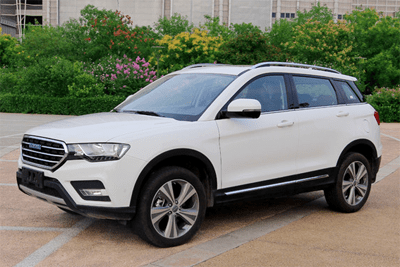 On the other hand of the scale are manufacturers like Geely, BYD and Great Wall, who have greatly improved their local sales and are looking to expand their exports from developing markets to developed markets, driven by their desire to gain profitability from their own domestic brands without needing the subsidy of a manufacturing Joint Venture with a foreign automaker. These brands will continue to gain market share at home, at the cost of their competitors who can sit back and rake in the profits by producing cars for their overseas partners.
On the other hand of the scale are manufacturers like Geely, BYD and Great Wall, who have greatly improved their local sales and are looking to expand their exports from developing markets to developed markets, driven by their desire to gain profitability from their own domestic brands without needing the subsidy of a manufacturing Joint Venture with a foreign automaker. These brands will continue to gain market share at home, at the cost of their competitors who can sit back and rake in the profits by producing cars for their overseas partners.
What are your predictions for 2017? Which brand or model do you expect to surprise or disappoint this year? Let me know in the comments below.

